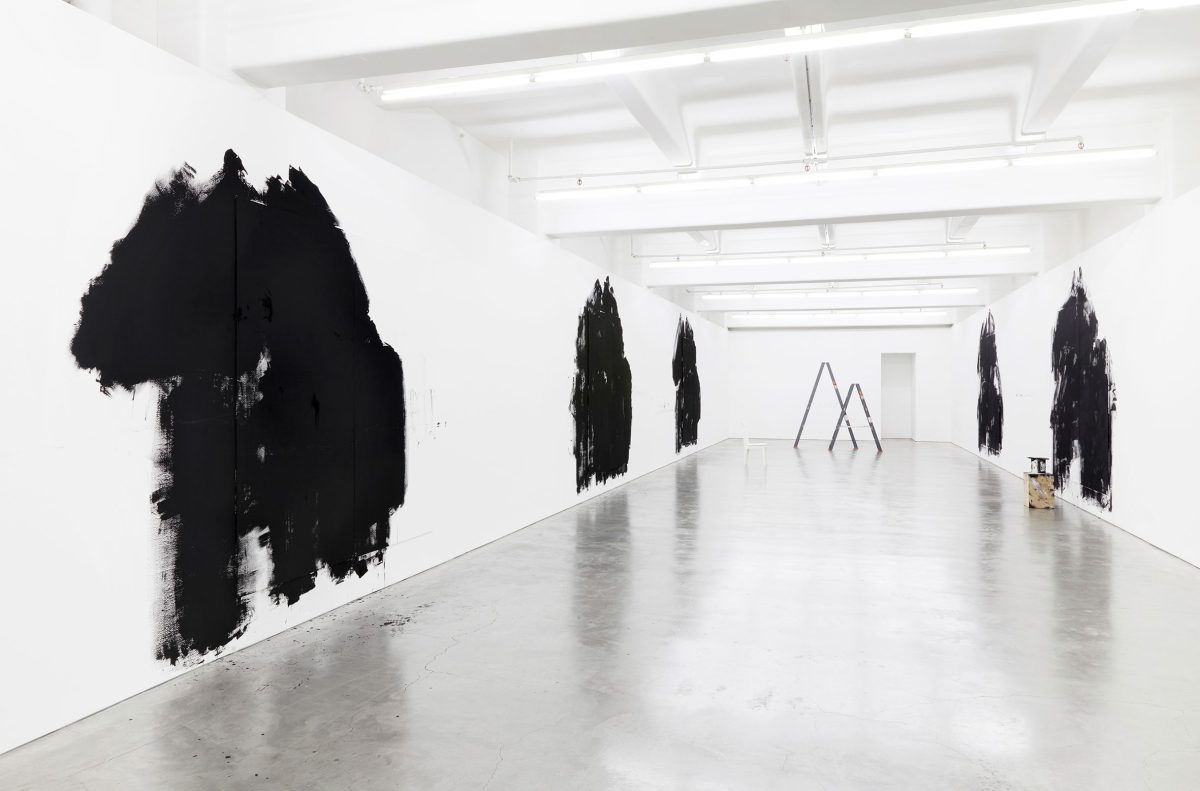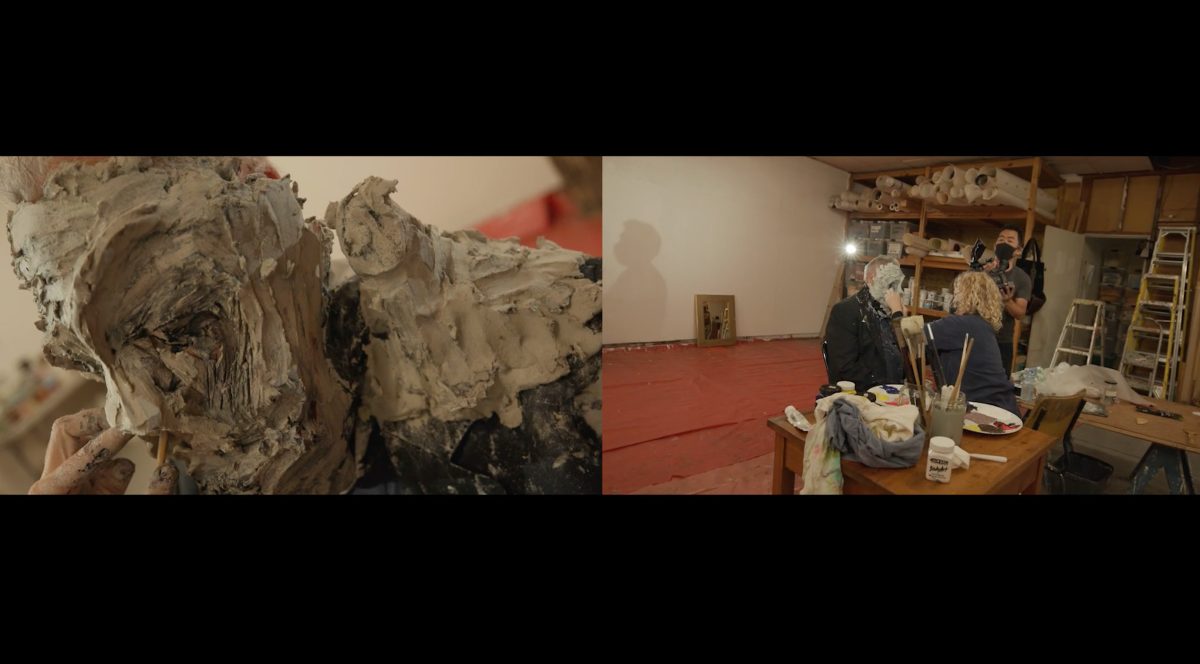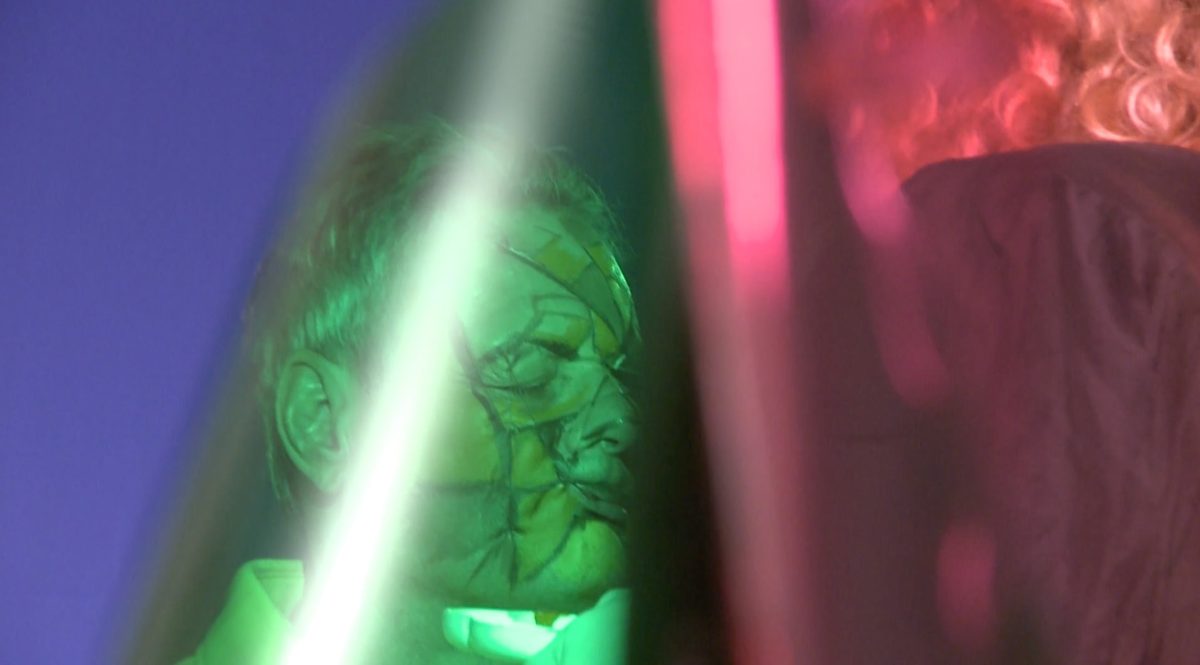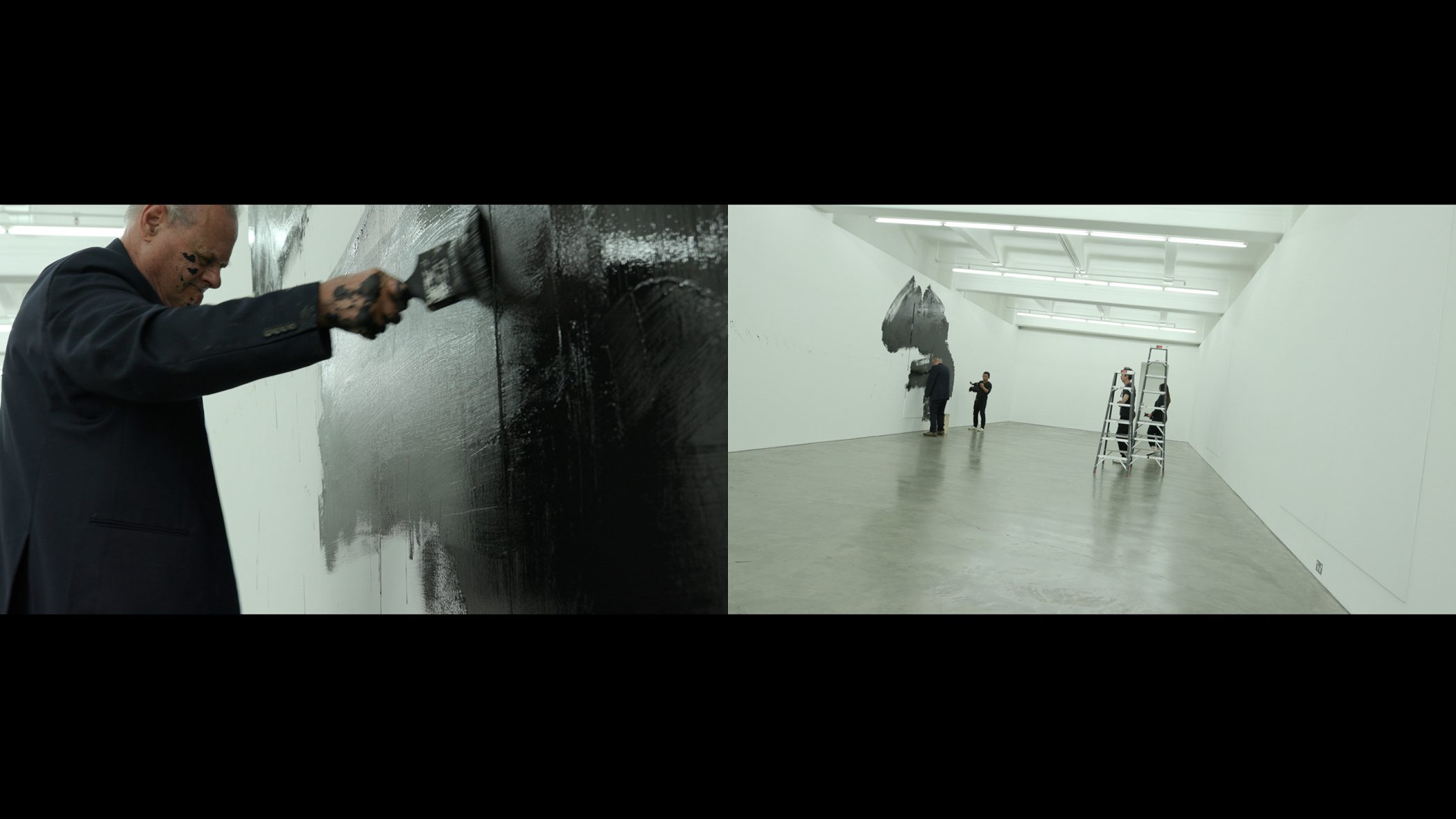Mike Parr
Half Way House
1st May – 31st July 2021
Anna Schwartz Gallery
Mike Parr’s artistic production stems from his work as a performance artist. The last few years (although not strictly limited to this period) have seen the artist use performance as a productive gesture for exhibition-making. Within this process works are created in-situ. Another tendency has been to use the exhibition as a dynamic medium, with performances evolving works from one state into the next.
Half Way House is Parr’s most recent exhibition to use this approach. Central to this is the interrogation of the self-portrait image, and blindness. Since the 1980s, Parr’s Self-Portrait Project has encompassed every material approach the artist uses, with performance, as stated above, the point of departure. The project comprises thousands of images, and for this exhibition, drawn and painted examples from the 1980s are nominated as primary substance for new works. Installed as singular installations, historical works on paper and canvas are transformed by Parr’s performative ‘action painting’. Undertaken ‘blind’, these performances bring Parr’s approach to mark-making into the exhibition space, collapsing the traditional production-to-presentation model. The artist has said of earlier Blind Self-Portraits that, “the imagery all seems to emerge out of the process of touching the surface. Touching the surface is one of the steering parameters of all my printmaking and touching the plate was the basis for all the early work in dry point.” Here, the site of presentation is also for production.
The exhibition-as-medium is also material for re-use. In LEFT FIELD (for Robert Hunter) at Anna Schwartz Gallery in 2017, the artist overpainted white paint on the white gallery walls as a repetitive action, evidenced only with the video documentation left behind. The same video documentation was subsequently exhibited in The Eternal Opening (Carriageworks, 2019) within a 1:1 scale replica of the original gallery space. Also in that exhibition was the video documentation from Parr’s performance BDH [Burning Down The House] (Biennale of Sydney, 2016) which saw the artist set fire to an 18 x 12 metre grid of works from his print archive. In 2018, a ‘blind’, direct wall drawing in charcoal was used to create one of the central works in KINDNESS IS SO GANGSTER (Anna Schwartz Gallery). A performed ‘blind’ painting of gallery walls followed shortly after, firstly in Towards a Black Square (Detached, Hobart, 2019) and subsequently in Towards an Amazonian Black Square (2019), which was also included in The Eternal Opening at Carriageworks. Parr simultaneously excavates his own back-catalogue while also extending it.
Parr’s performances for Half Way House generate new works in-situ as well as videos that are inserted back into the exhibition as delayed feedback loops. In performances from the early 2000s, Parr created live feedback loops, where an image of the live performance was webcast, or ‘broadcast’ into an adjacent physical space, or virtually. The image was manipulated either through framing or direct intervention, and audiences were able to experience both situations. Parr’s play with presence and absence recurs throughout much of his work. More recently, performance documentation has been structural, with cinematographers and photographers nominated as co-performers and included in-frame. The recording involves two moving cameras, which is then displayed as a two-channel video. This structural device offers a simultaneous view of the artist’s physical and mental effort, the inseparability of mind and body. Previously asserted with the limits of what is physically possible, Parr now underscores this with blindness.
Presence and absence is also a material exploration. A selection of three video works will be shown through the different stages of the exhibition, two of which variously depict the artist’s face being ‘made up’, with either audio or visual distortions. Art Classes (2020), filmed in Parr’s studio last year, uses the two-camera structure to survey Parr’s face being covered with plaster (rendered sculpture) up-close and from a distance, with one cinematographer designated to film ‘blind’. This obscures the image from one point of view, while the face is being obscured through the action in the other. MIRROR/ARSE (reading backwards from the Australian National Dictionary) (2012) precedes Art Classes and occurs during a period that saw Parr perform a series of face sewings. Following the initial action, the face is then ‘made up’ or ‘disguised’ and overlaid with a soundtrack (also distorted) of the artist reading from the Australian National Dictionary backwards. A recurring character, the dictionary has been used by Parr throughout his career. “The final agglutinated form of the film assaults the concept of identity, while also making a mess of pictoriality and entertainment values.”
Sculpture is consistent throughout Parr’s oeuvre, even if intermittent. The new installation of fourteen bronze-cast, nickel-plated heads, Towards a Blind Self-Portrait, uses a combination of moulds of previous self-portraits, with new negatively modelled ‘blind’ self-portraits to radically shift the outcome. The artist’s own archive is again the substance for new work, a point of departure, and a feedback loop. The siting displaces and inverts a previous exhibition, with the new sculptures installed directly above where their counterparts were 25 years ago (Bronze Liars, 1996, Anna Schwartz Gallery). “I’m continuing my researches into the end of the self-portrait image and the notion of ‘blindness’… the end of the image as a representation… and all those unconscious forces that swirl in the vicinity of matter itself… I feel that nickel plating will ‘put the image to sleep’… abstract/alienate it further as a representation. I want the whole ensemble to seem like the aftermath of a performance.”
Images

Mike Parr
Half Way House , 2021
performance
3 hours 15 minutes
30 April 2021, Anna Schwartz Gallery
Performer: Mike Parr
Cinematographer: Gotaro Uematsu
Second camera: Heath Franco
Photographer: Zan Wimberley
Co-performer: Rob Campbell

Mike Parr
Half Way House, 2021
(still) two-channel video, 16:9, 4K, colour, sound
1 hour
Performer: Mike Parr
Co-performer: Linda Jeffereyes
Cinematographer: Gotaro Uematsu
Second camera: Heath Franco

Mike Parr
Art Classes, 2020
(still) two-channel video, 16:9, 4K, colour, sound
1 hour
Performer: Mike Parr
Co-performer: Linda Jeffereyes
Cinematographer: Gotaro Uematsu
Second camera: Heath Franco

Mike Parr
MIRROR/ARSE (reading backwards from the Australian National Dictionary), 2012
(still) single-channel video, HD, 16:9, colour, surround sound
29 minutes 16 seconds
Performer: Mike Parr
Co-performers: Garry Manson & Linda Jefferyes
Cinematographer: Gotaro Uematsu



